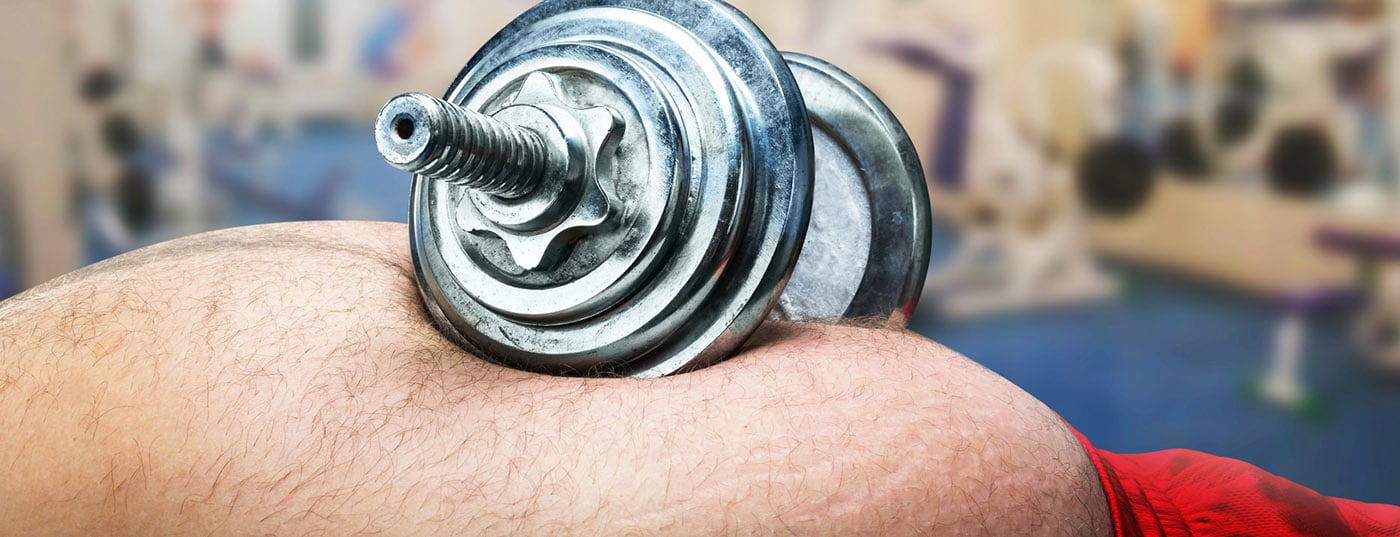The Federal Statistical Office is merciless! The publication released by the FSO at the end of 2014, based on the Swiss Health Survey conducted every five years, makes it clear: the population in Switzerland is getting fatter and fatter – among men, the 50% mark has even been cracked. Every second man is thus overweight or obese. Among women, the figure is also already more than 40%. What are the health implications of this trend and what should you know about exercise for obesity?
The proportion of overweight people has more than doubled in the last 20 years, and worse still, more and more children are affected. According to the FSO, many of these overweight people are happy with their weight, even though obesity is one of the most important risk factors for cardiovascular disease, type II diabetes and even certain forms of cancer.
Overweight: a logical problem
With rarer exceptions, obesity is purely a bookkeeping problem: if the body is supplied with more calories through diet than it needs for its basal metabolic rate and work metabolic rate, then there is an unwanted build-up of reserves in the form of fat, which accumulates not only under the skin but throughout the body. So the solution seems simple: in order not to gain weight (or to lose weight), the organism must consume more energy than it receives from food. And this is where physical activity, sport, comes in. That’s because anything beyond sitting and lying down burns more calories than inactivity – in varying amounts, of course, depending on the intensity and duration of the activity.
What sounds simple is often a bit more complex in practice, as the following example illustrates: 1 kg of fat contains about 7000 Kcal. In other words, to lose 1 kg, you need to burn 7000 Kcal. One hour of walking at a speed of about 4 km/h burns about 180 Kcal. If you take into account that at such a power the fat provides about 60% of the energy needed, you would have to walk for 66 hours! So you can quickly see that weight loss is realistically only possible through a negative energy balance (“less intake, more output”). This simple rule should not be forgotten in the face of all the countless slimming products and variants of diet cures. There is simply no other “trick” to losing weight.
Calorie reduction alone is counterproductive
However, physical activity does not only serve to increase energy output. While on the one hand the reduction of calories promotes the reduction of fat reserves, on the other hand it also promotes the reduction of muscle mass – and thus causes a decrease in the basic metabolism. This is unfavorable, considering that over 24 hours the most essential energy consumption is via basal metabolism. Solution: Coupling calorie reduction and physical activity in the treatment of obesity simultaneously increases energy expenditure and maintains basal metabolism. So this combination will reduce the fat mass, but keep or even increase the muscle mass. It is well known today that with pure calorie restriction, weight loss eventually stagnates, and then even declines, the well-known yo-yo effect – actually almost worse than being slightly overweight. Maintaining muscle mass is the most effective way to counteract this and stop the harmful vicious cycle: Weight loss → Muscle loss → Loss of ability to be physically active → Decrease in energy consumption.
The situation can be summarized in three points:
- There is a strong link between obesity and lack of exercise.
- Physical activity alone is not enough to lose weight.
- Physical activity is essential in the care of overweight people.
Do you burn the most fat at low intensity?
As performance physiology – an essential part of sports medicine – teaches us, during physical activity lasting two to three minutes, the muscle cell uses mainly fats and carbohydrates as an energy source, and the necessary ATP is produced aerobically, oxidatively. At loads in the order of 60% of the maximum, the relative proportion of fat burning is the highest, but the desired result can hardly be achieved in this way. What counts to burn as much fat as possible is not the relative, but the absolute percentage and this is most efficient at high training intensity (at heart rates of about 75% of maximum). Nevertheless, today it is still recommended to cover long distances at a leisurely pace and to train at a rather low intensity in order to burn as much fat as possible. It can be assumed that this misconception is based on the confusion between relative and absolute fat burning. A second possible explanation for the incorrect advice is to be found in the false assumption that untrained people do not burn any fat at all in the first 30 minutes and therefore have to be active for longer in order to lose fat at all. In a sense, the low intensity allows overweight people to exercise for more than 30 minutes. The fact is, however, that even the untrained or less trained burn fat from the first few minutes of physical activity.
Situation with overweight
However, overweight and mostly untrained people have a significant handicap. With the same relative performance as trained people, they burn less fat on the one hand and are hardly able to stay in the optimal fat burning range for a long time on the other hand, because they are too untrained. A possible solution to make optimal use of the unfavorable conditions nevertheless is the interval method, i.e. a relatively intensive activity is interrupted again and again by a more leisurely phase. This allows even obese people to repeatedly enter the optimal fat-burning range and probably increase fat burning to begin with, because fatty acid concentrations increase after an intense performance. During the lower load, more fatty acids enter the blood from the subcutaneous fat tissue and are subsequently available for burning in the muscle fibers during the more intense activity. This proves that fat burning can be trained! Once again: Contrary to all claims to the contrary, leisurely walking and (Nordic) walking are far from sufficient for this. Only when the body is repeatedly subjected to maximum stress and pushed to its limits does it adapt.
Which sports are suitable?
Because of the slightly larger body mass, not all sports activities are equally suitable for overweight people. Disciplines such as cycling or cycle ergometer, swimming or aquafit are preferable. The optimal fat burning range is also here at a relatively intense power. Consequently, overweight people need to start with a low intensity and accept that they will not lose much weight for the time being. On the one hand, because they are not yet in a position to train intensively enough, and on the other hand, because the small amount of fat loss that nevertheless takes place is compensated for by the muscle building that takes place at the same time. The scale does not notice this. However, overweight people must not stop at a low intensity level, but slowly increase it. They can also support the fat loss with a few tricks from the beginning. The interval method has already been mentioned. When the athletic acclimatization phase is over, you can try to increase the intensity again, especially towards the end of the training. Thus, energy consumption is increased not only during the workout, but also after the end of the workout. This afterburning can be further increased by drinking only unsweetened water after training and waiting at least one hour before eating. Further, the type of sport also plays an important role in whether one consumes more or less energy. In principle, sports in which as many muscle groups as possible are active are preferable.
It pays to stay realistic. In the beginning you hardly lose any weight, later 500 g per week can be celebrated as a success. Only in the long term will the body weight level off. With varied training and an adapted diet, the weight is not only reduced, but later also kept constant – the yo-yo effect is thus avoided.
Difference inactivity and overweight
One final note: obesity and physical inactivity are two significant, related causative factors in the development of deaths. As bad as obesity is, lack of physical activity is responsible for twice as many deaths in Europe as obesity. While obesity and physical inactivity go hand in hand, the greatest risk of early death is among those who are physically inactive – this applies equally to those of normal weight, overweight and obese.
HAUSARZT PRAXIS 2015; 10(6): 7-8












